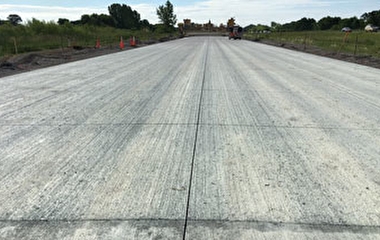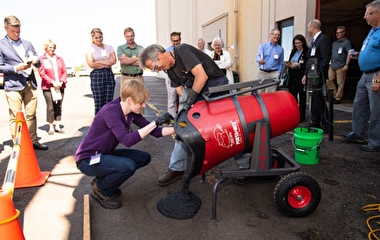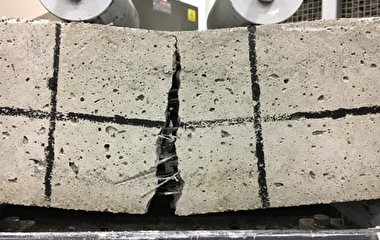Concrete pavements can be challenging to patch effectively. Patching mixes must rapidly gain strength to allow the roadway to be reopened to traffic quickly while bonding well with the existing pavement to prevent separation between the pavement and the patch, says Eshan Dave, associate professor of civil engineering at the University of Minnesota Duluth.
In a recent project, researchers led by Dave developed improved guidelines for evaluating concrete patching mixtures. Using a series of laboratory tests, Dave’s team tested 13 different patching mixtures for key properties including strength, shrinkage, bonding, and durability.
“The impact of our research will be a better-performing patch material,” Dave says. “The performance criteria we developed can be used to compare the materials tested in this project with new materials that will certainly be developed in the future.”
The team also developed a laboratory-testing-based acceptance procedure. The project’s sponsor, the Minnesota Department of Transportation (MnDOT), plans to use the acceptance procedure for partial-depth patching materials.
“MnDOT will now have a more comprehensive qualification process and a series of tests that can be performed to determine the effectiveness of partial-depth patching materials,” says Ron Mulvaney, MnDOT structural concrete engineer. “Improving the durability of these patching materials will help MnDOT realize significant future maintenance cost savings.”



